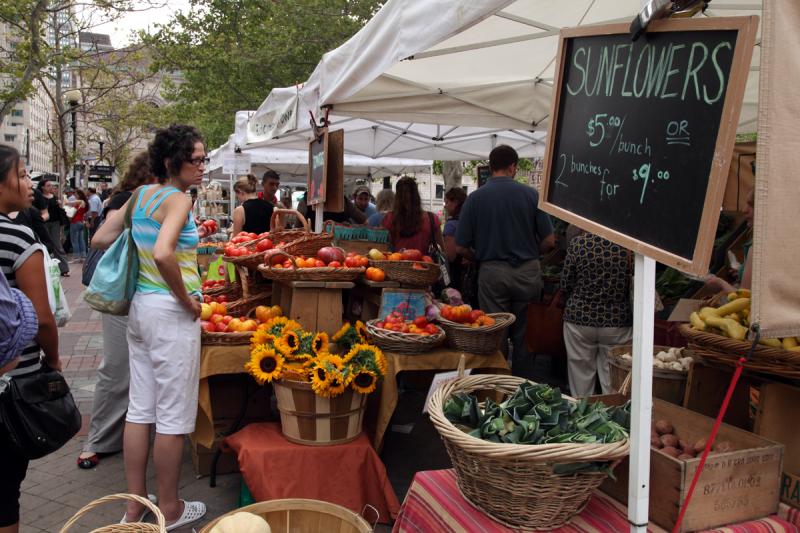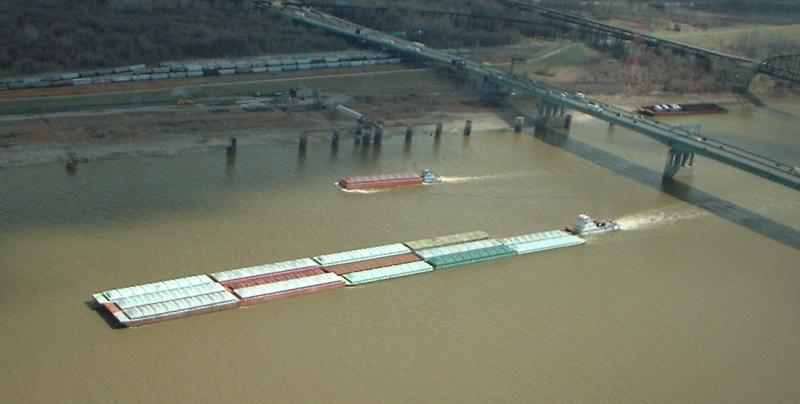Food Distribution
Projected rising temperatures, changing weather patterns, and increases in the frequency of extreme events may affect the food distribution system at the local, national, and global scales.
Land, water, and air transportation are all vulnerable to climate change. Adverse climate events impact transit time, delivery reliability, and efficiency, which affect the cost of all goods moving through the transportation system1—including food. High temperatures, extreme precipitation, and storm surges can damage roadways, runways, and railways.1,2,3 Sea level rise will make ports and harbors more vulnerable to flooding and storm surges, and may necessitate reconfiguration of ports, harbors, and bridges to accommodate higher seas.3 Floods and droughts will affect shipping channels and the navigability of inland waterways.3,4 Drought also increases wildfire probability, which can affect visibility and thus require road and airport closures.3 See Transportation for a more detailed discussion.
Climate variability and change will also affect food distribution systems indirectly, such as through changes in agricultural trade flows. For example, if corn production shifts northward in response to increasing temperatures, different transportation routes and modalities may be required to transport the corn to market from new origins.3 The cost of agricultural product transportation will also likely rise if policy measures and technological changes reduce greenhouse gas emissions by affecting fuel types.3
The impact of weather on transportation has been very visible recently in barge transport, which is a major conduit for grain export in the United States. For example, in 2012 a severe drought brought water levels in the Mississippi River to near-record lows. To avoid stranding, the Coast Guard restricted the draft of barges to nine feet, down from 12–14 feet, forcing them to carry lighter loads and increasing shipping costs.5
Proper food storage during processing, packaging, and transport is important for delivering safe, quality food. A rise in global temperatures and shifts in humidity associated with climate change could increase the risk of food poisoning and food spoilage. Innovations in storage and transport methods and technology, and improvement and extension of refrigeration throughout the supply chain, will be necessary to keep food safe.2
- 1a1bMcGuirk, M., S. Shuford, T.C. Peterson, and P. Pisano, 2009: Weather and climate change implications for surface transportation in the USA.WMO Bulletin, 58(2), 84–93.
- 2a2bJames, S.J., and C. James, 2010: The food cold-chain and climate change. Food Res. Int., 43, 1944–1956.
- 3a3b3c3d3e3fSchwartz, H. G., M. Meyer, C. J. Burbank, M. Kuby, C. Oster, J. Posey, E. J. Russo, and A. Rypinski, 2014: Ch. 5: Transportation. Climate Change Impacts in the United States: The Third National Climate Assessment, J. M. Melillo, Terese (T.C.) Richmond, and G. W. Yohe, Eds., U.S. Global Change Research Program, 130–149. doi:10.7930/J06Q1V53.
- 4National Research Council of the National Academies of Science, 2008: The Potential Impacts of Climate Change on U.S. Transportation. Transportation Research Board Special Report 290, 280 pp.
- 5U.S. Department of Agriculture, Agricultural Marketing Service, posted July 26, 2012: Grain Transportation Report.


